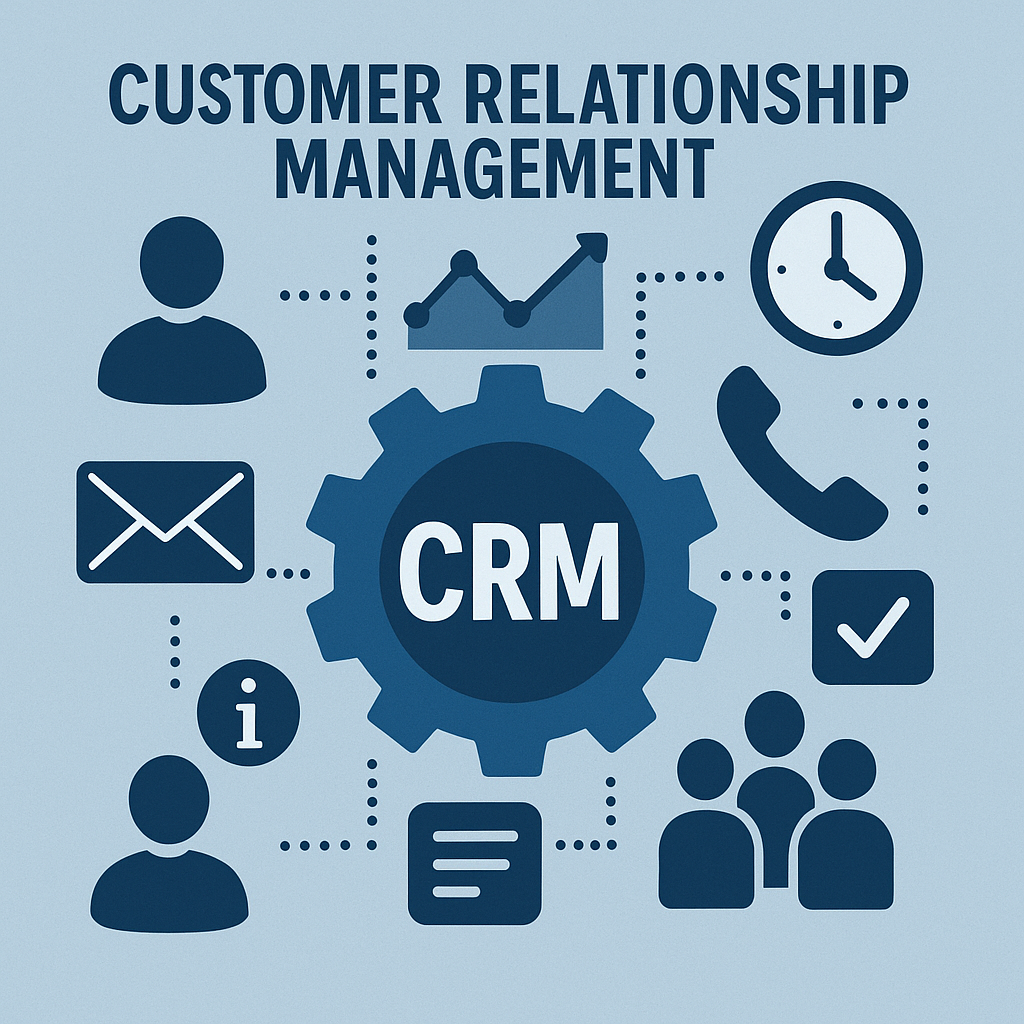In today’s competitive business landscape, building and maintaining strong customer relationships is more crucial than ever. Customer Relationship Management (CRM) has emerged as a strategic powerhouse that helps companies streamline interactions, boost loyalty, and drive growth. Whether you’re a startup scaling up or an established enterprise, grasping the fundamentals of CRM can transform how you engage with your audience. In this post, we’ll dive deep into what CRM really means, its key components, why it’s essential for modern businesses, and address some common questions in an FAQ section.
What is Customer Relationship Management (CRM)?
At its core, CRM is a strategic approach focused on the complete planning, control, and execution of all interactive processes with customers. It spans the entire organization and covers the full customer lifecycle—from initial contact to long-term loyalty. This isn’t just about software; it’s a holistic philosophy that integrates database marketing, relationship building, and technology to foster meaningful connections. CRM draws from several foundational concepts:
- Relationship Marketing: Emphasizing ongoing customer bonds over one-off transactions.
- Knowledge Management: Gathering and utilizing in-depth customer insights.
- Business Process Management: Structuring customer-facing operations for efficiency.
- Customer-Oriented Technologies: Leveraging tools like CRM software to enable personalized interactions.
The ultimate goal? To create stable, intense relationships with economically valuable customers while minimizing costs and encouraging referrals from satisfied users.
The Evolution and Types of CRM
CRM has evolved significantly with digital advancements. Traditional CRM focused on direct interactions, but today it encompasses various specialized forms:
- Electronic CRM (eCRM): Centers on digital channels like email, websites, and apps for seamless online engagement.
- Social CRM (SCRM): Integrates social media platforms to facilitate collaborative conversations and real-time feedback.
- Customer Experience Management (CEM): Goes beyond transactions to analyze and enhance the overall customer journey.
- Programmatic CRM: Uses automated, data-driven advertising to target customers precisely based on behavior and preferences.
These variations highlight CRM’s adaptability, ensuring it meets the demands of an increasingly connected world.
Key Characteristics of Effective CRM
What sets successful CRM strategies apart? Here are the hallmarks:
- Customer Orientation: Prioritizing the customer’s needs and preferences in every decision.
- Long-Term Focus: Building enduring relationships rather than short-term gains.
- Economic Efficiency: Reducing acquisition and maintenance costs through targeted efforts.
- Individualization: Treating customers as unique individuals with tailored experiences.
- Systematization: Managing the entire customer lifecycle, from pre-sales to after-sales support.
- IT Integration: Employing CRM software to automate processes, analyze data, and improve outcomes.
By embedding these principles, businesses can achieve higher customer satisfaction, loyalty, and profitability.
CRM Systems: Operative, Collaborative, and Analytical
CRM isn’t a one-size-fits-all tool—it’s divided into interconnected systems:
- Operative CRM: Handles day-to-day customer interactions, such as sales automation and service management.
- Collaborative CRM: Manages multi-channel communications, ensuring consistency across email, phone, social media, and more.
- Analytical CRM: Dives into data with tools like data mining and business intelligence to segment customers, predict behaviors, and measure lifetime value (CLV).
A central Customer Data Warehouse acts as the backbone, storing comprehensive data for informed decision-making. Techniques like data mining help uncover patterns, while metrics such as CLV guide resource allocation toward high-value customers.
Related Concepts and Tools in CRM
CRM doesn’t operate in isolation. It intersects with several related areas:
- Database Marketing: Using customer data for targeted campaigns.
- Dialog Marketing: Interactive communication to build rapport.
- Supply Chain Management (SCM): Integrating CRM with logistics for end-to-end efficiency.
- Data Mining: Extracting insights from vast datasets.
- Customer Lifetime Value (CLV): Calculating a customer’s long-term worth to prioritize efforts.
These elements work together to create a robust ecosystem that supports customer retention through trust and satisfaction, rather than rigid contracts.
Why CRM Matters for Your Business
Implementing CRM can lead to transformative benefits: lower costs, higher retention rates, and a steady stream of referrals. In an era where customers expect personalized, seamless experiences, CRM empowers businesses to deliver just that. For companies like those in the tech or scaling sectors (think gentscale.com), CRM tools can supercharge growth by turning data into actionable strategies.
FAQ
CRM refers to the overall strategy and philosophy of managing customer relationships, while a CRM system is the software or technology used to implement and automate these processes, such as tracking interactions or analyzing data.
Absolutely! Small businesses can benefit from CRM by organizing customer data, improving communication, and building loyalty without needing large teams. Many affordable CRM tools are tailored for smaller operations.
CRM helps businesses understand customer needs through data analysis, enabling personalized experiences and timely follow-ups that foster trust and loyalty.
Popular CRM tools include Salesforce, HubSpot, Zoho CRM, and Microsoft Dynamics 365, each offering features for businesses of varying sizes and industries.
Yes, most modern CRM systems integrate with tools like email platforms, marketing automation software, and e-commerce systems to create a seamless workflow.

